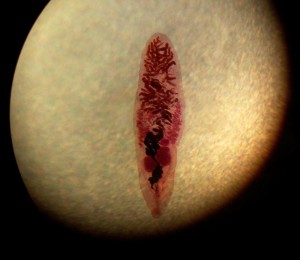There’s a great value in being precise when it comes to communication (if you want your message to be understood as you intended it, anyway; when clarity isn’t the goal, by all means, be imprecise). While that may seem trivial enough, it is my general experience that many communicative conflicts in psychology arise because people are often unaware of, or at least less than explicit about, the level of analysis at which they’re speaking. As an example of these different levels of analysis, today I will consider a question that many people wonder about: does altruism really exist? While definitions do vary, perhaps the most common definition of altruism involves the benefiting of another individual at the expense of the actor. So, to rephrase the question a little, “Do people really benefit others at an expense to themselves, or are ostensibly altruistic acts merely self-interest in disguise?”
“I would have saved his life if you wouldn’t have thought me selfish for doing so”
There are three cases I’m going to consider to help demonstrate these different levels of analysis. The first two examples are human-centric, as they have a greater bearing on the initial question: reciprocal exchanges and breastfeeding. In the former case – reciprocal altruism – two individuals will provide benefits to each other in the hopes of receiving similar assistance in turn. This type of behavior is often summarized with the “you scratch my back and I’ll scratch yours” line. In the case of breastfeeding, the bodies of mammalian mothers will produce a calorically-valuable milk, which they allow their dependent offspring to feed on. This latter type of altruism is generally not reciprocal in nature, as most mothers do not breastfeed their infants in the hope of, say, their infant one day breastfeeding them.
But are these acts really altruistic? After all, if I’m doing a favor for you in the hopes that you’ll do one for me later, it seems that I’m not enduring a cost to provide you with a benefit; I’m enduring a cost to try and provide me with a benefit. As for breastfeeding, offspring share some of their mother’s genes, so allowing an infant to breastfeed is, in the genetic sense, beneficial for the mother; at least for a time, at which point the weaning conflicts tend to kick in. If the previous thoughts ran through your head, chances are that you’re thinking about some of the right things but in the wrong way, blurring the lines between different levels of analysis. Allow me to explain.
In a post last year, I discussed what are commonly known as the “big four” questions one might ask about a biological mechanism, like the psychological ones that generate altruistic behavior: how does it proximately (immediately) function; how does it develop over one’s life; what is its evolutionary history with respect to other species; and what its evolved function might be. These questions all require different considerations and evidence to answer and, in many cases, can be informative as to answers at other levels. Despite their mutually informative nature, they are nonetheless distinct.
The first and fourth questions (proximate and evolutionary functioning) are the most relevant for the current matter. Let’s start by considering reciprocal altruism. The first question we might ask concerns the proximate functioning of the behavior: do people behave in ways that deliver benefits to other individuals that carry costs for the actors? Well, we certainly seem to. Some of these acts of reciprocal altruism might be based on relatively short-lived and explicit exchanges: I give you my money, you give me your goods and/or services. In other cases, the exchanges might be longer lived and more implicit: I give you help today, you should be inclined to give me help down the road when I need it. To demonstrate that these acts are, in fact, altruistic, is relatively straightforward: in the first example, for instance, I would be better off getting my goods/services and keeping my money. The act of giving does not provide me with a direct benefit. Even though we might both benefit from the exchange (gains from trade, and all that), it doesn’t mean each portion of the exchange isn’t altruistic. Proximately, then, we can say that people are altruistic or, more conservatively, that people engage in altruistic behaviors from time to time.
Score one for team good
But how about the mechanisms generating these reciprocally-altruistic behaviors; do they function to deliver benefits to others? That is to ask whether these mechanisms were selected to deliver benefits to others. The answer to this question depends on which part of the system you’re looking at. In the broader sense, that answer is “no,” inasmuch as the cognitive systems for reciprocal exchanges appear to owe their existence to receiving benefits from others, rather than providing them; the providing is just instrumental to another goal. This would mean we have altruistic behavior that is the product of a non-altruistic system, which is a perfectly possible outcome. However, in a narrower sense, the answer to that question can be “yes,” inasmuch as the broader cognitive system engaged in reciprocal exchanges is made up of a number of subsystems: one such system needs to monitor the needs of others and generate behavior to deliver benefits to them in order for the system to work, making that bit seem to be adapted for providing altruism; another piece needs to monitor the return on those investments, down-regulating altruistic behavior in the absence of reciprocity (or other relevant cues). This is where being precise really begins to count: some parts of a system might be considered altruistic, while others are more selfish.
Now let’s turn to the breastfeeding example. Beginning again with the proximate question, breastfeeding certainly seems like an altruistic behavior: the mother’s body pays a metabolic cost to create the calorically-rich milk which is then consumed by the infant. So the mother is paying a biological cost to deliver a benefit to another individual, making the behavior altruistic. In the functional sense of the word, this behavior appears to be the result of adaptations for altruism: mothers of a number of mammalian species are found to breastfeed their infants with little apparent need for reciprocity. The reason they can do so, as I previously mentioned, is that the infants share some portion of their mother’s genes, so the mother is, by proxy, improving her reproductive success by helping her offspring survive and thrive. Importantly, one needs to bear in mind that explaining the persistence of these altruistic mechanisms over time with kin selection does not make them any less altruistic. In much the same way, while the manufacturing of cars owes its existence to the process being profitable, that doesn’t mean that I’m inclined to think of cars as really being devices designed to make money.
The third example of altruism I wanted to mention is an interesting one, involving a certain parasite – the Lancet Liver Fluke – that infects ants (among other things). In brief, this pathogen will impact an ant’s behavior such that the ant will dangle from the tip of a blade of grass, leading to being more likely to get eaten by a passing grazing animal (it then travels from the grazer to snails to ants and then back into the grazers; it’s a rather involved reproductive cycle). In the proximate sense, this behavior of the ant is altruistic inasmuch that the ant is suffering a cost – death – to deliver a benefit to the parasite. However, the ant possesses no cognitive mechanisms designed for this function; the adaptations for making the ant behave as it does are found within the parasite. In this case, while the proximate behavior of the ant might appear to be altruistic, it is not because of any altruistic adaptation on the part of the ant.
The new poster child for increasing altruism
Depending, then, on what one means by “really” when asking if something is “really” altruistic, one can get vastly different answers to the question. Some behavior may or may not be proximately altruistic, the system under consideration may contain both altruistic and non-altruistic mechanisms, and the extent of that altruism can also vary. These examples should highlight the considerable subtlety that underlies such analyses, hopefully impressing upon you the point that one can easily stumble, instead of progress, if ideas are not carefully selected and understood. There are, of course, other realms we could consider – like altruism that functions to signal traits about the actor, to gain social status, or whether the immediate motives of an actor are altruistic – but the general analyses, rather than their specific details, are what is important here. Thinking about what benefits organisms might reap through their altruistic behavior is a very valuable line of thought; it just shouldn’t be confused with other meaningful levels of thought.




Pingback: Socially-Strategic Welfare | Pop Psychology